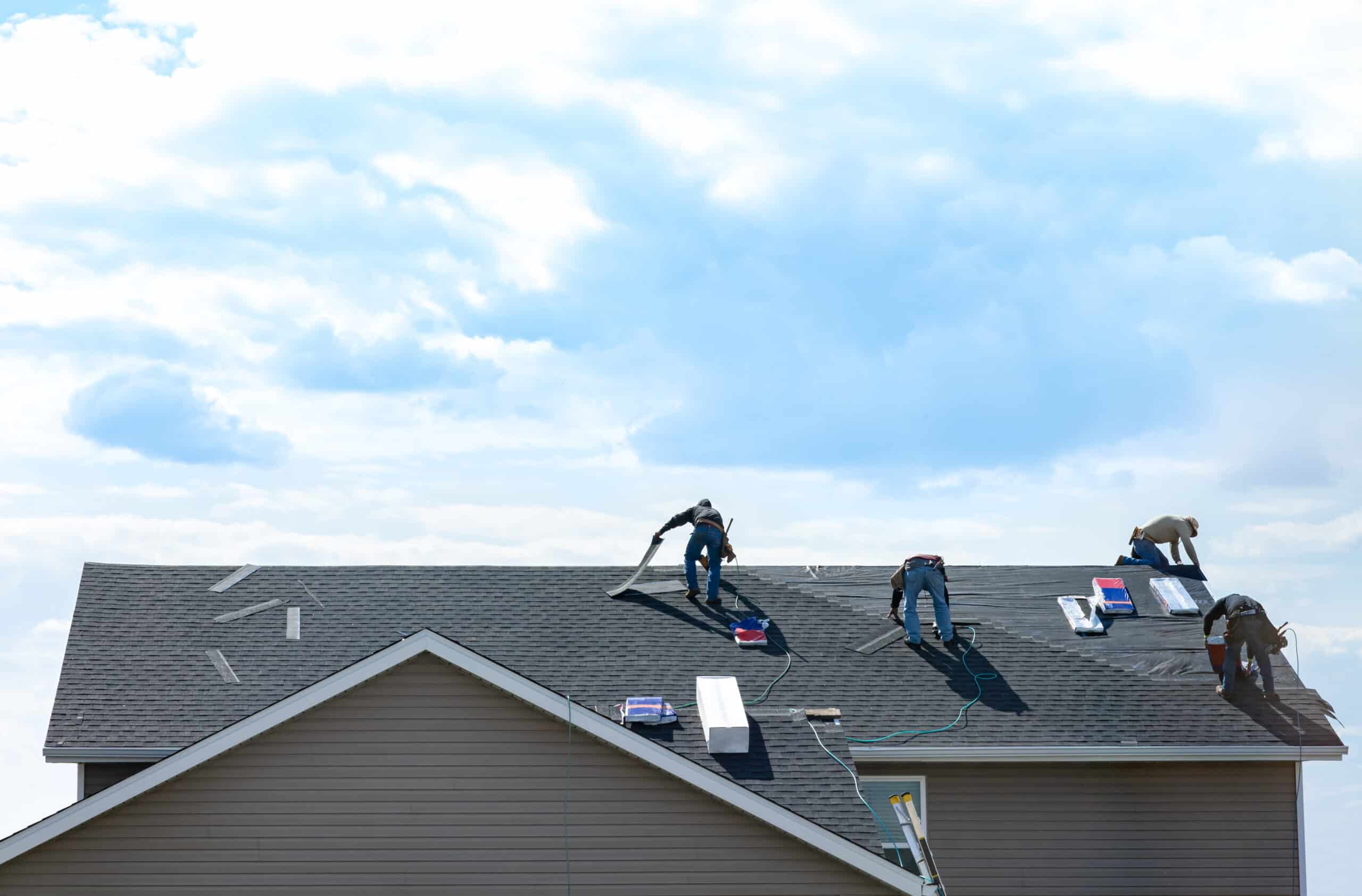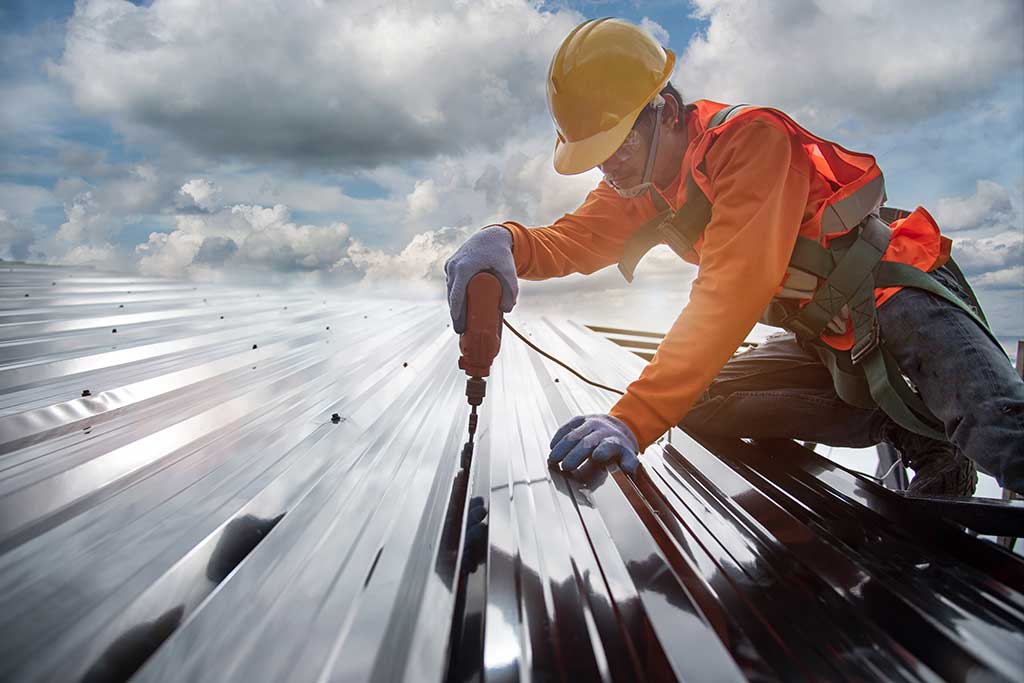A Comprehensive Overview to Effective Roof Covering Flat Roof Covering Installation
The intricacies of level roofing system installment need a thorough technique, beginning with a thorough understanding of different flat roofing types and the vital products required for ideal performance. A successful setup hinges not just on the choice of materials however likewise on the preparation and implementation of each step involved in the process. As we explore the important stages from prep work to maintenance, it comes to be obvious that forgeting also minor information can dramatically influence the roof's longevity and effectiveness. What particular approaches can ensure a seamless installation that holds up against the test of time?
Understanding Flat Roof Types
When thinking about flat roofing systems, it is necessary to comprehend the various types readily available, as each deals unique benefits and drawbacks tailored to details requirements. One of the most usual kinds of level roof coverings include Built-Up Roof covering (BUR), Modified Asphalt, and Single-Ply membranes.
Built-Up Roof covering contains several layers of asphalt and crushed rock, giving outstanding resilience and climate resistance. It is specifically beneficial in locations prone to severe climate condition yet might require even more upkeep as a result of its complicated building and construction.
Changed Asphalt is a prominent selection for its convenience of installment and adaptability. It typically employs a torch-applied or self-adhesive approach, which can be beneficial for fast repair services and long-term efficiency. Nonetheless, its life expectancy can be shorter contrasted to BUR.
Single-Ply membranes, including Thermoplastic Olefin (TPO) and Ethylene Propylene Diene Monomer (EPDM), are acknowledged for their lightweight nature and power performance. These products are commonly chosen for commercial buildings because of their cost-effectiveness and simplicity of installation (Cleveland Roofing Specialists). They might not offer the exact same level of insulation as other alternatives.
Each roof kind requires cautious factor to consider based upon environment, spending plan, and particular project requirements.
Vital Materials for Flat Roof
A variety of important materials are essential for the effective setup of flat roof. The choice of materials straight impacts resilience, efficiency, and total efficiency.
Among the main products is the roof covering membrane layer, which can be built from different materials such as polycarbonate polyolefin (TPO), ethylene propylene diene monomer (EPDM), or PVC. Each kind offers special benefits, including UV resistance and versatility, which are vital for extended efficiency.
In addition to the membrane, insulation materials play a considerable duty in energy efficiency. Rigid foam boards or polyisocyanurate insulation are preferred choices, as they offer superb thermal resistance and moisture management.
Moreover, roof covering adhesives and sealants are necessary for guaranteeing a water tight installation. These products need to be suitable with the chosen membrane to stop wear and tear with time.
Getting Ready For Setup
Proper preparation is vital for an effective flat roof installment, as it prepares for a effective and resilient roof. Begin by performing a detailed assessment of the existing roof covering structure. Seek indicators of damage, including leakages, rot, or poor drain, which might jeopardize the new roof. Make sure that the hidden materials are audio and can sustain the weight of the brand-new roof elements.
Following, gather all necessary devices and materials, ensuring that they satisfy sector criteria. This includes water resistant membranes, insulation, blinking, and fasteners. Acquaint on your own with the maker's specifications, as adherence to these standards is critical for guarantee functions.
Furthermore, ensure that the job area is free from particles and obstructions to help with effective and risk-free installment. Think about weather; prevent installation throughout heavy rainfall or severe temperature levels, which can impact material performance. Inform any type of occupants of the building regarding the approaching job to guarantee safety and security and reduce interruptions. By taking these preparatory steps, you can boost the possibility of a successful flat roofing installation that satisfies both architectural and visual demands.
Step-by-Step Installation Refine
With the groundwork developed through comprehensive preparation, the following phase involves executing the flat roof covering installment methodically. Begin by ensuring that the structural deck is tidy and complimentary from debris. Next off, set up a vapor obstacle to stop dampness accumulation below the roof material. This action is vital for maintaining the roof's integrity in time.
Adhering to the vapor barrier installment, set insulation click to investigate boards, guaranteeing they fit snugly with each other to lessen thermal bridging. Secure the insulation with ideal fasteners based on the roof type and local building ordinance. When the insulation remains in place, it's time to apply the roof covering membrane. Depending upon the picked product-- such as TPO, EPDM, or modified asphalts-- set up the membrane according to the maker's specifications.
Set up blinking around borders, vents, and any kind of roof covering infiltrations to improve waterproofing. After installation, carry out a comprehensive evaluation to recognize any type of possible issues prior to concluding the project, guaranteeing a trusted and durable level roof covering system.
Maintenance Tips for Durability
Routine maintenance is vital to guarantee the durability and performance of a flat roofing system. Among the key tasks is to conduct regular evaluations a minimum of twice a year, preferably in spring and fall. Throughout these assessments, search for signs of wear, such as sores, fractures, or pooling water, which can show underlying concerns.

Making certain proper water drainage is vital to prevent water build-up. Inspect and clear gutters, downspouts, and scuppers to ensure unhampered water circulation. Additionally, examine seals around vents, skylights, and other penetrations for any type of signs of deterioration, applying caulk or sealant as needed to preserve a watertight barrier.
Last but not least, consider professional maintenance services every few years for comprehensive maintenances. By sticking to these more info here upkeep pointers, you can significantly prolong the life of your flat roof covering, guaranteeing it remains a trusted shield against the components.
Final Thought
Effective flat roof covering installment demands a methodical strategy including detailed inspections, product choice, and careful preparation. Abiding by the outlined actions throughout the setup process guarantees the proper application of roof covering membrane layers and insulation while improving waterproofing with effective blinking installment. Moreover, implementing routine upkeep methods dramatically adds to the longevity of the roof. By adhering to these standards, a reliable and durable level roof service can be attained, with the ability of enduring numerous environmental problems.
The intricacies of flat roofing system setup demand a precise method, beginning with a detailed understanding of various flat roof kinds and the essential materials needed for optimum performance.Proper prep work is important for an effective level roof setup, as it lays the foundation for a resilient and efficient roofing system. After setup, conduct a comprehensive assessment to recognize any kind of potential issues prior to ending address the task, ensuring a robust and trustworthy level roofing system.
